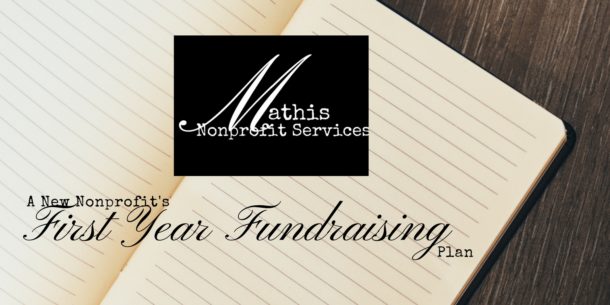Giving Tuesday is closer than you think! It’s time to start thinking through the process you will need to have a successful day. In a few months, the videos, social media posts, website, and online giving materials will need to be created and scheduled. Today, we concentrate on the plan. (And by the way, this plan isn’t just for Giving Tuesday! You can use it to create any online giving campaign or integrate it into an appeal campaign!)
Before we begin, one side note. If you did a campaign last year, now is the time to look over your Right, Wrong, Missing, and Confusing report.
Step One- Who Will Be Your Point Person?
Figure out who will be responsible for making sure all the pieces get done. This person should be highly organized, have strong leadership abilities, and can commit to the entire campaign timeline and process.
Step Two- What Will Be Your Focus for This Campaign?
Campaigns usually do better when there is a specific theme, project, or milestone (vision) you want to achieve. Themes do well for general operations. The best results are found when a specific purpose for the money is given. If you are new, cast your vision of your next milestone. Is it to welcome your first clients or to have a facility?
Step Three- What is Your Goal and Budget?
Every fundraiser has a fundraising goal and can have more than one. Maybe its to raise $1,000 and gain 25 new donors. Without a goal, you will not be able to tell if you are successful. Now is a good time to set a budget! Of course, if you did a Fundraising Plan, these things should be in it and you can just copy, paste, and done.
Step Four- What Channels Will You Use?
By channels, I mean Facebook, Instagram, Twitter, YouTube, Direct mail, email, etc. Where are you going to promote this campaign?
Step Five- What Do You Want to do to Promote Your Online Giving Campaign?
Make a list of things you would like to do again or things you want to try in order to get to your goals. Maybe you start putting a P.S. in thank you letters a month or two before the event letting people know. Maybe you ask your monthly donors to make an exception that month and give on the day of giving. Will there be a Facebook Live coming from your offline event? Will you hold an event in real life? It’s a question you need to answer now because it will affect your planning and timeline. Get creative here.
Step Six- Who Are Your Fundraisers?
Successful campaigns enlist fundraisers who will help you raise awareness and money for the cause. They will be your loudest champions online and offline. They can be Board, volunteers, or donors. Five is a good number to start with.
Step Seven- How Will You Engage Your Board?
Board members should always be involved in fundraising. This campaign is no exception. List 5 ways you can get them involved. Some examples may be a competition or challenge grant.
Step Eight- What Matching and Challenge Grants Can You Receive?
Now is the time to brainstorm who you will ask for a matching or challenge grant. In case you aren’t sure of the difference between matching or challenge grants, here is the difference. A matching grant means that the donor will match the amount of money raised in a certain amount of time. If that amount is not raised, then the organization does not get the entire amount of the matching grant, only what is raised plus the same amount in matching funds. Challenge grants are ones where the donor gives you a certain amount of money and challenges other people to meet that donation amount. This amount is usually a large amount and requires many donors. The challenge grant can also be a challenge of X number of donors giving x amount of money in a short specific timeframe. Think of businesses or major donors you can approach. Volunteers or employees may be able to raise money for challenge grants. Sometimes Foundations have matching grants you can apply for too. List 5 ways you can receive a matching or challenge grant.
Step Nine- How Will You Thank People After the Event?
List three ways you will thank your donors. Think of the people who donate, people who give matching and challenge grants, and those who helped you with your campaign.
Step Ten- How Will You Move Forward?
How will you build relationships with the new donors who came to your cause through your campaign? How can you turn them into repeat donors?
Once these ten steps are completed, it’s time to put your plan on paper and create a timeline. For now, just finish the ten steps. You have a minute.


 Most nonprofit leaders lay awake at night trying to figure out how to fund their mission.
Hi! I'm Alesha.
I teach sustainable fundraising in a way that they can take action today so they can serve their clients.
I can help you move from just getting started funding your new nonprofit to gaining confidence in your fundraising and building relationships to knowing what works for your organization and looking at the infinite game when it comes to funding. I’ve worked with nonprofit Founders and written the book I HAVE MY 501(C)3! NOW WHAT?!? Your Blueprint to Starting Your Nonprofit Without Being the Sole Funder that lays the foundations for funding in a new nonprofit.
I’ve worked in Development (Fundraising) Departments in large organizations and I know the no cost, low-cost methods they use to bring in funding. I bring those sound strategies to the nonprofits I serve.
Most nonprofit leaders lay awake at night trying to figure out how to fund their mission.
Hi! I'm Alesha.
I teach sustainable fundraising in a way that they can take action today so they can serve their clients.
I can help you move from just getting started funding your new nonprofit to gaining confidence in your fundraising and building relationships to knowing what works for your organization and looking at the infinite game when it comes to funding. I’ve worked with nonprofit Founders and written the book I HAVE MY 501(C)3! NOW WHAT?!? Your Blueprint to Starting Your Nonprofit Without Being the Sole Funder that lays the foundations for funding in a new nonprofit.
I’ve worked in Development (Fundraising) Departments in large organizations and I know the no cost, low-cost methods they use to bring in funding. I bring those sound strategies to the nonprofits I serve.